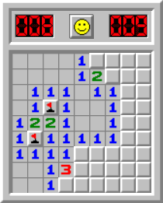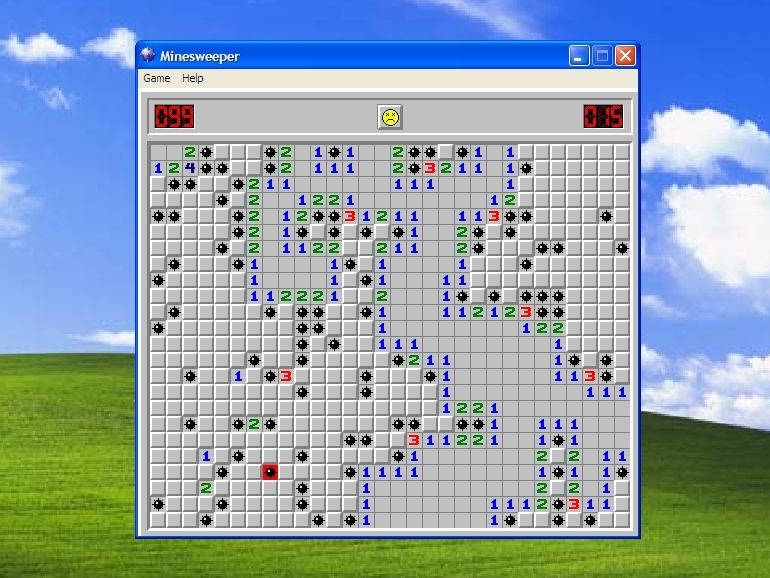Minesweeper is one of the most iconic puzzle games of all time, known for its simple yet addictive gameplay. For many, it was a staple of early computer gaming, bundled with Microsoft Windows and enjoyed by millions. But while it became a household name in the 1990s, the origins of Minesweeper date back much further. This article explores the history, evolution, and impact of this beloved game.

Early Beginnings: The Birth of Grid-Based Puzzle Games
Before Minesweeper as we know it today, similar games existed that revolved around uncovering hidden objects on a grid. The concept can be traced back to the 1960s and 1970s when mainframe computers ran simple text-based games.
One of the earliest known predecessors was a game called “Mined-Out”, developed by Ian Andrew in 1983 for the ZX Spectrum. This game required players to navigate a minefield without stepping on hidden mines, a mechanic that closely resembles what Minesweeper would later refine.

Microsoft’s Minesweeper: The Game That Took Over the World
The version of Minesweeper that most people recognize was developed in 1990 by Curt Johnson and Robert Donner, two Microsoft employees. Their version was inspired by earlier grid-based games and designed as a fun way to improve users’ efficiency with a computer mouse.
Minesweeper made its debut in Windows 3.1 (1992) and quickly became one of the most played games on the platform. The game’s primary purpose, beyond entertainment, was to familiarize users with right-clicking and precision mouse movement, which were relatively new interactions at the time.
Why Was It So Popular?
Several factors contributed to Minesweeper’s widespread appeal:
- Simple rules, yet challenging gameplay – Players had to use logic and deduction to uncover safe squares while avoiding hidden mines.
- Instant accessibility – Since it was pre-installed on Windows, anyone with a PC could play it.
- Quick play sessions – Unlike lengthy strategy games, Minesweeper could be played in short bursts, making it a perfect casual game.
Gameplay Mechanics: A Simple Yet Genius Concept
Minesweeper’s rules are straightforward:
- Players start with a grid of covered squares, some of which hide mines.
- Clicking on a square reveals a number that indicates how many mines are adjacent to that square.
- Using logic and deduction, players must determine which squares are safe to uncover.
- Right-clicking places a flag to mark suspected mines.
- The game is won when all non-mine squares are uncovered. Clicking on a mine results in an instant loss.
The game’s difficulty is adjustable by changing the grid size and the number of mines, adding to its replay value.
Minesweeper in the Modern Era
Despite being removed from Windows 8 and later versions, Minesweeper remains popular. Microsoft released an updated version, Microsoft Minesweeper, on the Microsoft Store, featuring modern graphics, daily challenges, and new game modes.
Additionally, numerous clones and variations exist on mobile devices, web browsers, and other gaming platforms. Competitive players even speedrun Minesweeper, aiming to clear boards in record times.
Legacy and Cultural Impact
Minesweeper played a pivotal role in gaming history. It was one of the first digital logic puzzles to reach a mass audience and remains a classic example of how simplicity can lead to deep, engaging gameplay.
For many, it was their first introduction to logic-based puzzle games, inspiring the development of modern mobile puzzle games. The game also retains a nostalgic charm, reminding older players of the early days of personal computing.
Conclusion
Minesweeper is more than just a game—it’s a cultural icon. From its early text-based predecessors to its dominance on Windows PCs and its continued relevance today, it remains a testament to the power of simple yet brilliant game design. Whether you’re a longtime fan or a newcomer, Minesweeper is a game that never truly gets old.
If you haven’t played in a while, why not fire up a game and see if you can beat your old high score?
